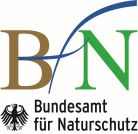/// For better differentiation ///
The research project of the same name has since developed into a much-used information platform with various web applications (https://ee-monitor.de), which is being maintained and expanded by other follow-up projects.
Information platform EE-Monitor
The website https://ee-monitor.de provides high-resolution information on the environmental compatibility of the energy transition in Germany.
Is the expansion of renewable energies compatible with nature? The expansion of renewable energies is having an impact on species, habitats and landscapes: Power lines, wind turbines, photovoltaic systems and other technologies for utilising renewable energies require space and their expansion represents an encroachment on the established habitats of animal and plant species and on the landscape. Whether the expansion of renewable energies is environmentally compatible depends on many factors. Against this background, the EE-Monitor provides a scientifically sound basis for the social debate on the environmentally compatible expansion of renewable energies in Germany. The EE-Monitor helps to identify both undesirable developments and positive trends in the environmentally friendly expansion of renewable energies.
Renewable Energy Plant Locations: Web GIS of the EE-Monitor
How have renewable energiy sites in the electricity sector developed spatially and temporally in Germany over the past 30 years? With the help of the web application, interested users can map this development and thus take a virtual journey into the past of renewable energies.
Indicators of the monitoring
The monitoring of the RE Monitor comprises 41 indicators that describe the environmental compatibility of the expansion of renewable energies by technology over time on the basis of data. The indicators explicitly cover aspects of the expansion of renewable energies relating to nature conservation as well as energy economics. The indicators are assigned to nature conservation target fields that formulate the requirements for a nature-friendly energy transition. A nature-friendly energy transition in this sense means meeting society's energy needs in an environmentally friendly and sustainable manner without harming nature and the environment and harmonising them with the requirements of environmental protection and nature conservation. The aim is to minimise the ecological footprint of energy production, protect ecosystems and preserve biodiversity through suitable measures. This also includes the efficient use of energy in order to reduce energy requirements and minimise the environmental impact.
Regional Report
The regional report provides a region-specific perspective on the 41 indicators. The available values can be viewed nationally, at federal state and district level and selected according to the respective technologies. The region-specific values can be easily forwarded by copying the URL.
Kontakt / Newletter
Completed research project of the same name "EE-Monitor" (2015-2018)
Nature conservation monitoring of the expansion of renewable energies in the electricity sector and development of instruments to minimise the impact on nature and the landscape
Short description
- multitemporal detection of the spatial distribution of energy generation and energy transport infrastructure (power plants of renewable energy and transmission networks) and environmental and socio-technological conflicts related
- Derivation of appropriate indicators for monitoring the impact of past and future expansion of renewable energies
- Derivation of recommendations for policy and planning
Website
Final report
Team
Department Bioenergy
Prof. Dr. Daniela Thrän
David Manske
Dr. Katja Bunzel
Department of Conservation Biology & Social-Ecological Systems
Department of Environmental and Planning Law
Project Partner
Deutsches Biomasseforschungszentrum
Contact
ee-monitor@ufz.de
Grant authorities
German Federal Agency for Nature Conservation
Alte Messe 6
04103 Leipzig
Germany

Project duration:
01.08.2015 - 31.12.2018
